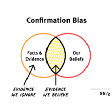Making a splash in Construction and Engineering
How recent trends are shaking up the built environment
This year’s report by the World Green Building Council (WorldGBC) stated that just under 1% of all buildings worldwide are net zero ready. The remaining 99% are in the midst of a largest transition in decades or even centuries. Despite its net zero ambition, the UK still has a long way to go - roughly £326 trillion worth of assets is still about to be dissected, rearranged, and eventually decarbonised. With the urbanisation boom not slowing down despite the looming recession, the construction and engineering sector has a chance to apply transformational learnings at pace and lead the way for others.
Here are three trends we see from our work with some of the most forward-facing organisations in the industry.
Calling for the top-down
The impetus fuelling net zero planning and advice is mostly coming from the construction and engineering consultancies recognising the importance of their influence on the wider sector. Jacobs and WSP are amongst the top companies who are making the world more connected and sustainable — they’ve recently joined the Environment Analyst’s industry rankings of the global top 30 environmental & sustainability consulting firms. WSP — in partnership with Magnetic — are supporting National Highways with the creation of a transformative stakeholder engagement plan to facilitate action around its net zero commitments. Jacobs are looking to find sustainable, scalable business models that could help create successful smart city deployments.
This is happening largely without the oversight of the government which according to the Parliament’s Environmental Audit Committee is ‘dragging its feet’ over providing support. It is becoming increasingly clear that without a mandate on reducing both embodied and operational carbon the change will remain driven by ambitions of a handful of consultancies and contractors, inevitably leaving the rest of the sector in the mud. As summarised by one of our contacts on the frontline of the transition: ‘we need to raise up collectively as an industry. There is no point in raising above the bar only to see how far others are left behind’.
Utilising Modern Methods of Construction and Engineering
The heavy lifting does not exclusively lie on the side of consultancies setting pace of the net zero transition. The challenge extends to the contractors and manufacturers who are expected to deliver huge build quantities in very short spaces of time and are already struggling to meet the requirements using traditional methods. A growing trend is an urgent need to adopt new ways of working such as ‘offsite’, including volumetric or modular systems. The process of conceiving a structure away from its primary location is heavily supported by Building Information Modelling (BIM), which can be used to share information across stakeholders and eliminate inefficiencies and waste.
While BIM has been present in the industry for over two decades, the extremely data-rich requirements for creating 3D models means its full potential has only been harnessed in the most recent data era. Atkins — member of the SNC-Lavalin Group — has invested significantly in information management globally and is pioneering new data-driven approaches to project delivery, including the use of artificial intelligence and development of digital twins. The new way of working can be used to enhance collaboration in teams and thus contribute to Climate Change adaptation faster, as in the case of the tidal barrier in Ipswich where BIM was used as one source of truth.
The big challenge here is making the most of the existing solutions and technologies while they are still being developed to the point of cost-efficiency. Whenever implementing a new service or system, there can be a temptation to fall back on the traditional ‘brick and block’ methods because of the cost difference as compared to a less conventional approach. More support is needed to break the loop and facilitate the transition to offsite as scale.
Addressing the skills gap
Just when companies seemed to crack the code to harnessing data in aid of the construction and engineering as we know it today, the labour shortage and resource scarcity introduced a whole new level of complexity. The calls for collaboration and open sharing are still counterbalanced by a hefty dose of rivalry — as Buro Happold points out, the lack of industry-wide cooperation fails to expose data insights beyond each building project.
The pool of talent in the sector has always been limited, with specialists making frequent lateral leaps. As safety and efficiency drives are making machinery more autonomous and operated remotely, there is a growing market for talent that can facilitate that transition. While the search for highly specialised individuals continues, the rapidly shifting market places emphasis on those who can understand the bigger picture. The hopes to reform and heal the sector from siloed ways of working are embodied in the persona of a Systems Thinker — a new face of the workforce who can understand and navigate modern-day ambiguity and puzzle together deep pockets of expertise.
Engineers need to effectively communicate the value of whole systems in terms of holistic performance of the buildings they create. The Building Controls Institute Association (BCIA) is forging a new path through its Trailblazer Apprenticeship scheme. In the future, we can expect more similar initiatives addressing a huge appetite for a workforce equipped with necessary skills and expertise.
All three trends are underpinning the larger force at play: the shift from ‘construction and engineering’ to ‘built environment’ is well underway. Those who can understand the complexities and intricacies of these environments on a holistic level will continue driving the change.
— — — — — — — — — — — — — — — — -
Want to continue the conversation? In the recent months Magnetic has supported a range of organisations in their mission to make a splash in the construction and engineering sector. If you want to know more, contact craig.vye@wearemagnetic.com or maria.zielinska@wearemagnetic.com.







